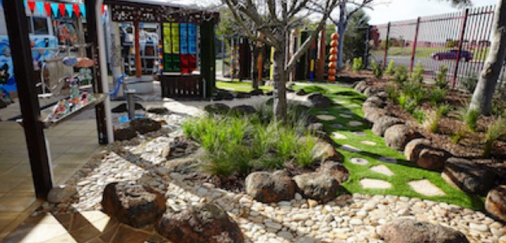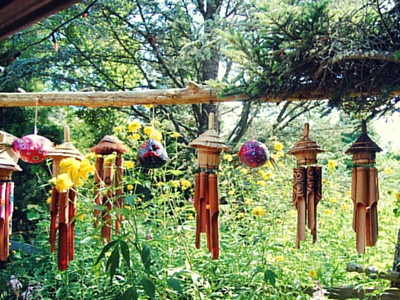Therapeutic garden space
What is a sensory garden?
The idea of a sensory garden is that plants, hard landscaping and other garden materials and features are selected for their appeal to all five senses with the aim of offering a richer and perhaps more therapeutic experience to a range of people with different needs.
Some of the aims of a sensory garden include: Encouraging the development of sensory abilities such as smell or touch, creating an interesting place for people with disabilities who may enjoy working and socialising outside of the classroom and a place to relax, be comfortable and feel safe.
What differs a sensory garden from a traditional garden?
All gardens are places where our senses are stimulated but the considered inclusion of features with particular sensory qualities with the particular intention of creating a beneficial environment for disabled people is what makes a sensory garden.


Ideas for the sensory garden:
 SIGHT:
SIGHT:
- Plant flowers of varying colours. Take the time of day and the seasons into account
- Include plant varieties with red, soft grey and mixed colour foliage
- Make use of contrast
- Clip or prune plants such as conifers (cypresses and pines) into interesting shapes
- Consider planting long grasses, strap-leaved plants and ‘weeping’ tree varieties – it’s restful to watch and listen to plants moving in the breeze
- Install a water feature. Include bright varieties of fish and water plants in ponds, with a bench nearby. If a sunken pond is not possible, a raised birdbath or other water feature works well.
- Include plants that appeal to birds and butterflies, such as bottle brush, lavender and hebe varieties
- Use trees and plants to hide visually unappealing areas.
- Choose trees that attract bird life
 HEARING:
HEARING:
- Include nectar-producing plants that lure birds into your garden
- Encourage birds into your garden with a birdbath
- Hang wind chimes in breezy areas
- Install a water feature
- Choose textured paths that make sounds as you walk on them, such as crushed gravel
TOUCH:
- Incorporate plants with different textures
- Vary the textures in your garden
- Choose hardy varieties of plants that can cope with handling
- Include different types of surfaces along your walkways
- Place plants and trees close to paths so that anyone walking along them is brushed by foliage
- Provide sunny and shady areas to offer temperature contrast
 SMELL:
SMELL:
- Plant flowers with subtle smells such as violets
- Plant aromatic, non-slip creepers or herbs such as mint, thyme or rosemary, near path edges or seats, so that when you walk on them they release a beautiful aroma
- Space scented flowers at intervals around your garden so that the different scents will not be confusing or overwhelming
TASTE:
- Grow your own herbs and use them in your cooking
- Plant a vegetable garden
- Plant fruit trees in your garden
- Plant species with edible flowers





